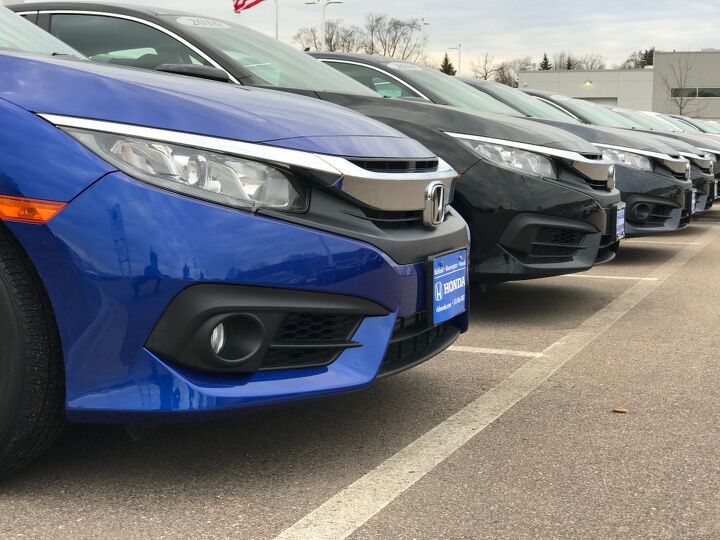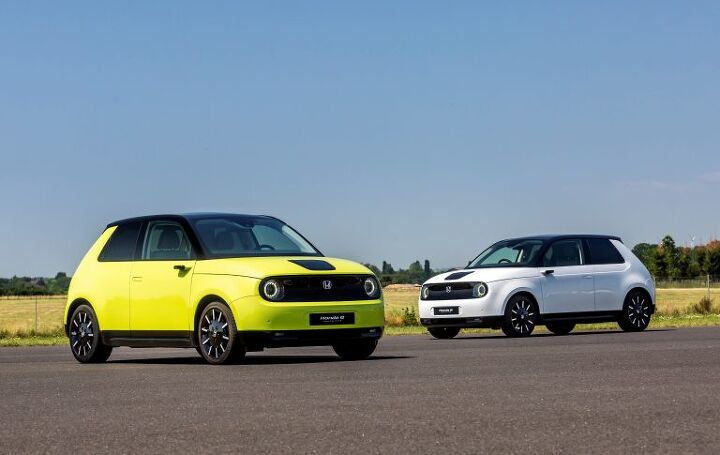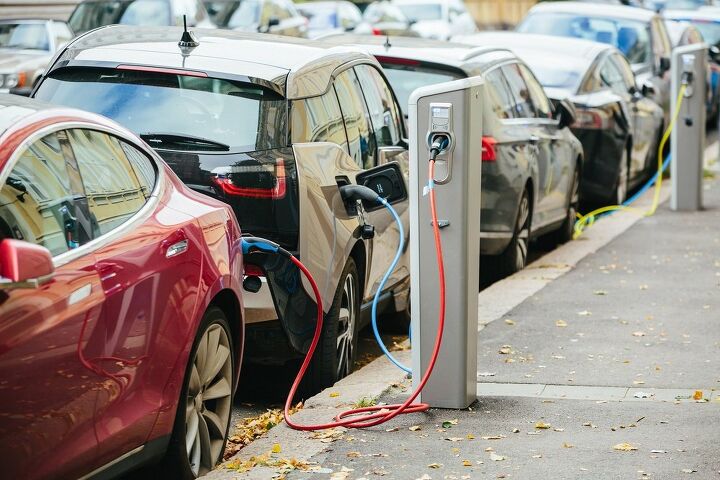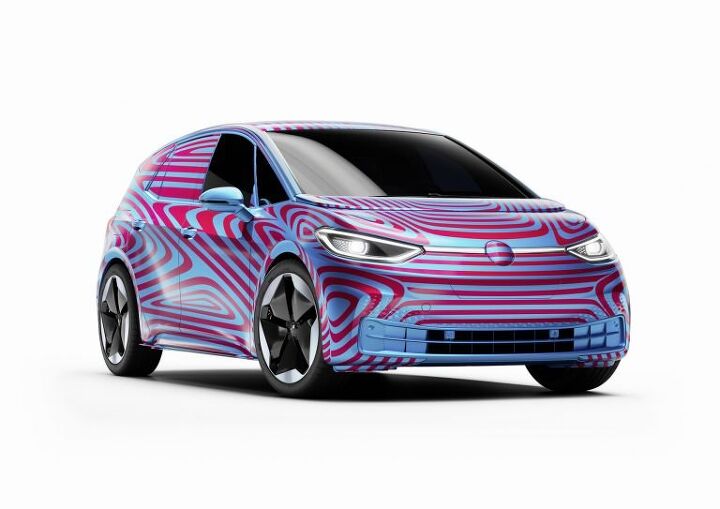#ElectricCars
Honda CEO: 'EVs Will Not Be Mainstream'
The tide of praise and promise that swept in at the impetus of the 21st century to support electric vehicles is receding. The same goes for the entire concept of autonomy — though this has been pulling back faster than Nicholas Cage’s hairline, and with only a fraction of its grace. Over the last few years, the number of voices shrugging off advanced technologies has increased, creating a rift between cynics and believers.
While largely disinterested in the ramifications of the technology, automakers have also tamped down their previously bloated expectations. Those pushing alternative powertrains and vehicular autonomy are becoming more based, but so too are the companies that never bothered chasing them quite so zealously in the first place.
Honda CEO Takahiro Hachigo says his company still has serious doubts as to just how lucrative electrification and mobility projects will actually be, suggesting the costs and complications of such technologies probably aren’t worth pursuing as a primary objective.
Keeping Tabs: Germany Promises One Million EV Charge Points by 2030
German Chancellor Angela Merkel announced Sunday that her country will soon have one million charging stations ready for electric cars. Her words came ahead of numerous meetings with German automotive manufacturers on how best to spur EV adoption in Europe.
Pivoting to zero-emission vehicles has many worried about job losses. The United Auto Workers issued a nearly 40-page report on the implications of electric vehicles and how to address them during its negotiations with General Motors — after the automaker said the battery plant it was eyeballing in Ohio would require hourly employees to take pay cuts. The Center for Automotive Research has also indicated that EVs simply don’t take as many man hours to manufacture. It’s even mentioned in the Trump administration’s fuel economy rollback proposal — an effort bent on furnishing cheap automobiles and American jobs.
Germany is worried too, with groups echoing similar employment concerns. To mitigate those fears, while encouraging electrification and maintaining jobs, the nation wants to take its 20,000 charging stations to 1 million.
Project Lead for Honda E Says Model Originally Intended for America
Since even before its debut, the Honda E has been showered with the kind of praise the American media usually reserves for controversial topics that split the nation, despite the model not being sold here. That’s likely fine. While its visual charms are undeniable, its small stature and electric powertrain probably wouldn’t do it any favors on the U.S. market. We could see it having an impressive first year before settling into a prolonged sales slump (think Fiat 500).
There are certainly alternative scenarios, but few involve Honda E supplanting the Civic. Being adorable will only take you so far. However, it seems Honda was originally willing to take a whack at it. The model’s product leader, Kohei Hitomi, said the little electric was always meant for America.
Lexus Teaser Appears to Be Showcasing New BEV… Right?
Lexus issued a teaser this week and it took a few passes before we could identify it as a vehicle. Initially, your dim-witted author presumed it was some kind of at-home charging solution or wildly modern vacuum cleaner design. Lexus’ tagline wasn’t much help, either. “The Future is Electrified” is boilerplate content for the automotive industry right now — or perhaps some highly contagious corporate tic.
This time it’s being used to preview a new battery electric vehicle Toyota’s luxury arm intends on debuting at the Tokyo Motor Show this month… at least that’s what we’ve been told.
Honestly, it’s still a little difficult to tell. While it seems as though we’re getting a close-up glimpse of the portion surrounding the model’s headlight, there are factors at play that make it hard to feel certain of anything. Is that giant opening supposed to be an air inlet? Where does it lead on this purely electric vehicle? Is this even the car’s front?
India: Counterpoint to Global Electrification
Last week we reported on the headway electric vehicles are making in the Netherlands, framing the situation as idyllic for EVs. Less picturesque for plug-in sales is India — a nation that has similarly attempted to encourage the proliferation of electric cars, but with unimpressive results. As it turns out, India makes a stellar counterpoint for worldwide electrification.
Based on the success EVs have seen over the last few years, you’d think the government was asking everyone to start eating hamburgers. Despite having a population of 1.34 billion people, with more of them becoming drivers every day, just 8,000 EVs have been sold in the nation over the last six years.
Nissan Reveals IMk Concept, New Design Cues for Brand
Nissan plans to unveil a new concept at the Tokyo Motor Show later this month. Suitable for the locale, the model is to be a fashionable EV aimed at urban commuters.
According to the manufacturer, the IMk Concept will be the best tool imaginable for that particular job. While it looks like a glitzy version of your typical Tokyo eco-box, the all-electric IMk is meant to serve as the template for the best city car ever built — likely trying its hand in markets around the world with a production version.
That said, the dimensions of the IMk will probably torpedo any ships heading to North America. At 135.2 inches long, 59.5 inches wide, and 64.7 inches tall, the model is slimmer than a Smart ForTwo and shorter/narrower than a Fiat 500. While the additional headroom will be a blessing, it’s still too small for our Rubenesque frames.
BMW Says No Successor Planned for I3 Hatchback
BMW’s i3 has reached the end of its road. The manufacturer recently stated that the model will not be updated, adding that there’s no plan for a successor. Despite the oddball Bimmer serving as the technological basis for the Mini Electric slated to launch next year, the i3 is going to stick around in its current form until the company has no further use for it.
Released in 2013, the i3 was Bavaria’s first stab at a mass-market EV. While this author sees them routinely parked in coastal cities, they’re an anomaly elsewhere. Overt success has eluded the model in the United States, with annual sales dropping from a high of 11,024 units in 2015 to just 6,117 deliveries in 2018. This year’s U.S. sales look to be even weaker for the model.
Fortunately for BMW Group, European sales have been on the rise every year since the car’s introduction. Last year, that resulted in 24,252 deliveries for the region — with 2019 already positioned to surpass that figure easily.
How Responsible Are EVs for Maintaining Our Automotive Infrastructure?
With electric-vehicle owners eligible for sizable tax breaks, and ineligible for federal fuel taxes, it often feels like they’re not pulling their weight when it comes to maintaining this great nation’s transportation infrastructure. However, feelings are sometimes wrong — when it feels like an Arby’s night, for example.
There are actually 26 states that presently impose fees upon EV owners and, according to Consumer Reports, 11 charge more than the amount drivers of similar, gas-powered cars pay in gas taxes, with 3 charging more than twice the average amount. Another dozen states are considering adding fees, with CR’s own research stipulating that 10 would require electrics to pay more than they would if they were powered by gasoline.
Volkswagen's Electric Product Parade Begins in Europe
Volkswagen revealed the first of many upcoming EVs based on its modular MEB platform at the Frankfurt Motor Show this week. While the ID.3 resembles a Golf in both form and function, VW claims this is not business as usual. According to the manufacturer, the new hatchback “reflects the realignment of the Volkswagen brand” by offering full connectivity, maximum efficiency, and no local emissions.
While it’s not coming to America, other ID models will be. Taking a long look at the ID.3 could provide us with a better understanding of what those vehicles might be like and help us examine the general direction the German manufacturer appears to be heading these days.
Nissan Previews New Compact Crossover for Dealers
Despite bringing the electric Leaf to market while the rest of the industry was still scratching its head over how to handle EVs, Nissan has since lost its lead. Eager to get back into the race, the automaker is putting together what it hopes will be a market-friendly model utilizing battery power. It previewed a pre-production concept to U.S. dealers last month.
While the clandestine nature of its debut leaves a lot up in the air, it’s clearly aimed at besting the latest and greatest coming from rival manufacturers. Range will be in the neighborhood of 300 miles, with room for five and sprightly acceleration. The shape? Crossover, obviously.
Automakers Need to Start Worrying About the Batteries Lurking in Older EVs
After a few years, most of us begin to notice our smartphones have developed an inability to hold a charge like they used to. The fix used to be pretty simple, no worse than swapping a couple of AAs into the remote. Order a new battery online, pop off the back of the device, and replace the run-down cell with a fresh one. Unfortunately, this simple act grew more difficult as manufacturers gradually decided to seal off access to your phone’s internals — mimicking the plight facing EV owners whose energy source is losing capacity.
A number of electric vehicles in the United States are about to celebrate their 10th birthday. A bunch of them are Nissan Leafs, the first mainstream BEV made widely available in the U.S. market. At the same time, customers have begun complaining about diminished range, with some asking for a battery refurbishment program like the one enjoyed by customers living in Japan.
So far, the best they’ve received is a confident “maybe” from the manufacturer. It might behoove them to expedite things and pull the trigger. Automakers are running behind in terms of establishing a global solution to aging EV batteries, and they’re risking a lot by not already having one in place.
BEV Fires Encourage China to Get Serious About Battery Safety, Vehicle Monitoring
China is currently the largest proponent of electric vehicles on the entire planet. The nation has even incorporated BEVs as a significant part of its complex strategy to overtake the United States the dominant global superpower. However a sudden influx of battery related fires has caused it some trepidation, even though there hasn’t been much evidence to suggest they are actually more prone to catching fire than gas-powered vehicles.
Regardless, the People’s Republic is now demanding that manufacturers conduct routine inspections on electric cars. China’s Ministry of Industry and Information Technology says all companies must conduct checks on BEVs, focusing on battery waterproofing, battery boxes, charging points, high-voltage wiring harnesses, and even the wear of mechanical components. They will also be required to report on repairs and any incidents that might indicate a problem. According to the ministry’s press release, they have until October to submit their findings.
VW Says ID.3 Pre-orders Exceeding Expectations
Volkswagen seems to be feeling pretty good about itself today. After announcing pre-orders for the ID.3 hatchback, the first vehicle from VW’s new electric sub-brand, the company reported it was already having issues coping with demand. Within 24 hours, the automaker said it had received more than 10,000 reservations throughout Europe, creating some extra work for its IT department.
“Sometimes, the IT systems are unable to handle the large number of users accessing the system at the same time,” VW said in a release. “This leads to long waiting times and interruptions in the registration process in some markets. Volkswagen is working hard to eliminate the hitches. Nevertheless, more than 10,000 registrations were received throughout Europe during the first 24 hours.”
While it sounds phenomenal, as the company repeatedly noted ID.3 demand is already exceeding expectations, it’s nowhere near Tesla territory. But the American firm is somewhat of an outlier with an almost miraculous ability to get the public excited about new product and a longer history of EV manufacturing. By comparison, VW is still testing the waters — even though it has already agreed to preform a cannonball by 2025 and sell 1 million connected, zero-emission vehicles every year.
Shocker: Electric Cars Are Still, Generally, a Plaything of the Wealthy
Pick your jaw up off the floor. As automakers struggle to offer electric vehicles deemed “affordable” by the motoring public, those buyers aren’t exactly swamping dealers with requests for EVs.
Even in the Europe Union, members of which punish drivers of fossil fuel-powered vehicles with high taxes, EVs amounted to just 2 percent of new vehicles registered last year. And yet the EU plans to drastically cut down on greenhouse gas emissions in the coming years.
New data from the European Automobile Manufacturers’ Association (ACEA) shows that the EU’s green dreams will be hard to realize without some sort of massive incentive for the purchase of electric vehicles, as right now those vehicles are only marginally popular in extremely wealthy countries. The EV “people’s car” is still a dream.
Truth, or Fake News? VW Claims ID.3 EV Will Be As Historically Important As Beetle, Golf
Months before its planned debut at Germany’s International Motor Show, Volkswagen has announced the first model of its ID electric sub-brand — the ID.3 — and wants the world to know it’s already accepting pre-orders. While the U.S. is unlikely to see the model for some time, if ever, the vehicle provides a glimpse into VW’s much-touted electrification strategy.
Volkswagen’s corporate release claims the ID.3’s MSRP starts below 30,000 euros (about $33,500 USD), with a “1st special edition” beginning at 40,000 euros (roughly $44,750 USD). Pretty steep for a people’s car.






























Recent Comments